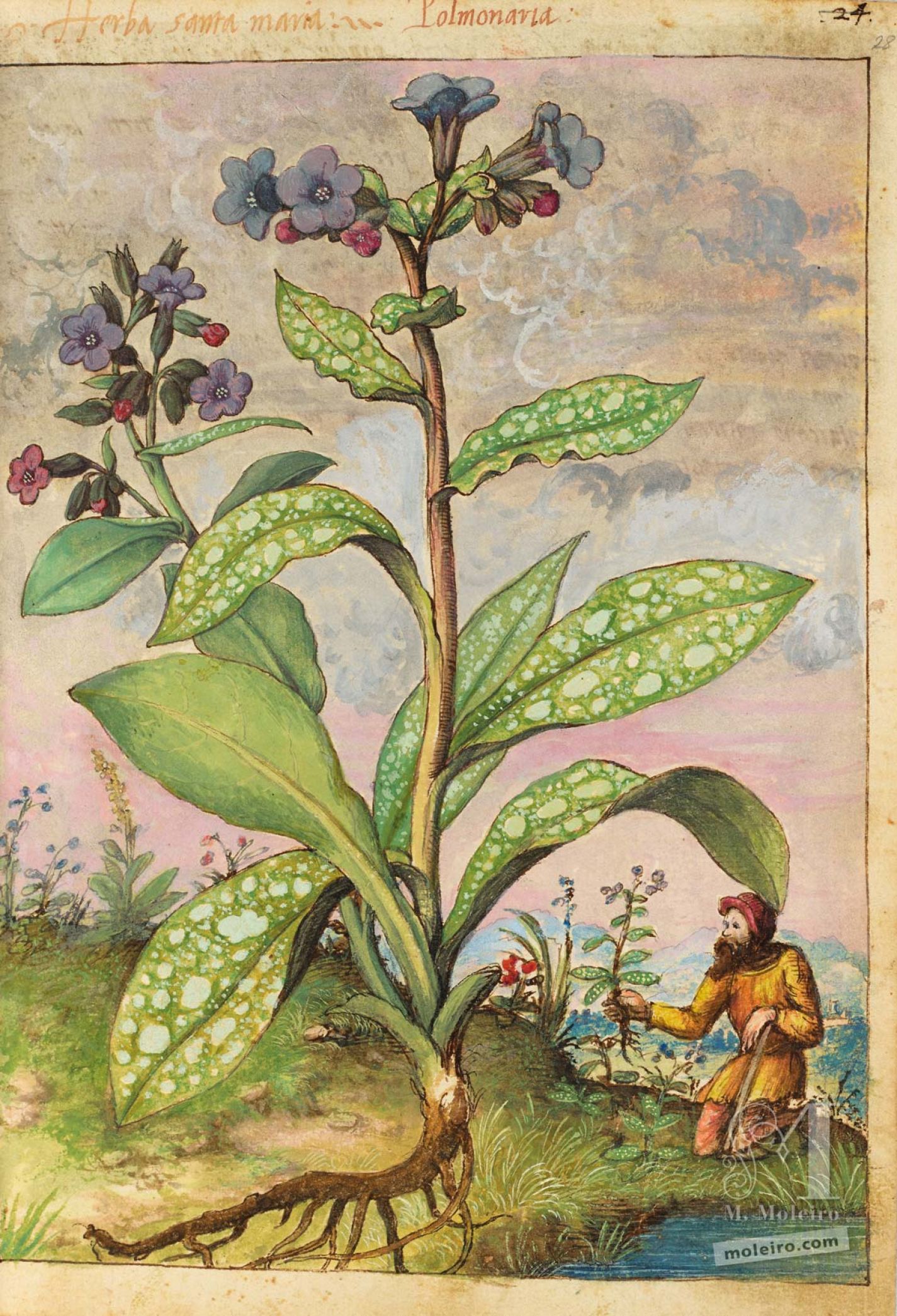There is another kind of lungwort, very different from that which grows on the trunks of old trees; this one grows in shaded places, with leaves very like those of borage, rough, hairy, and spotted all over with white, and with a taste just like that of borage. At the start of spring it grows a stem with purplish flowers, very like those of the houndstooth. Experts in simples attribute to this herb the not unimportant virtue of healing ulcers in the lungs; and on this subject Giuliano da Marostica, a most expert doctor from Treviso, told me he had tried it many times with extraordinary success against spitting blood. It is boiled until it reduces by one half and the decoction is drunk with sugar; or its squeezed juice is prepared with sugar. The flowers and leaves are of benefit for all these things and, cooked in any way at all, help those suffering from consumption. Mattioli said this. (f. 27v)
This plant grows in deciduous forests scattered across almost all of Italy, where it is endemic. This species is very similar to Pulmonaria officinalis, a medicinal plant used by pharmacists. It contains mucilage, tannins and saponins. Its sweetened cooking water alleviates colds and bronchitis. In years gone by it was a remedy for pneumonia and tuberculosis, as mentioned by the author. The species described here has the same effects. It probably started being used for this purpose, in keeping with the doctrine of signatures, because its leaves look like lung tissue. The deep pink flowers immediately go violet or bluish as shown in the miniature. The tender leaves are eaten as a vegetable.
Ramón Morales Valverde
Real Jardín Botánico de Madrid
(Extract from the commentary volume of Mattioli's Dioscorides illustrated by Cibo)
